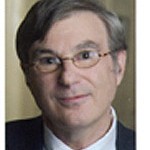The Future of the Jews: How Global Forces are Impacting the Jewish People, Israel, and Its Relationship with the United States by Stuart E. Eizenstat, Rowman & Littlefield, New York; ISBN 978-1-44422-1627-3 ©2012, $37.50, p. 318, plus notes and index
By Fred Reiss, Ed.D.

WINCHESTER, California–Stuart Eizenstat author of The Future of the Jews, from his vantage point as a former senior U.S. government official under three presidents, including U.S. ambassador to the European Union and deputy secretary of the treasury, holds that along with the collapse of the Soviet Union and the “us versus them”— Commie against Yankee— mentality, the world has fractured into multiple sources of growing economic and political strengths.
The failure of communism, he tells us, has moved the economic and political playing field from the west toward the east and south. Eizenstat provides alternative outcomes about the future of Israel and consequently world Jewry, by exploring the present and future developments in those emerging countries in the world’s new paradigm, Brazil, Russia, India, China, Turkey, Japan, and the European Union, together with their diplomatic and economic relationships with the United States, Israel, and the rest of the Arab world.
Eizenstat offers five salient worldwide challenges. He calls the first globalization, the integration of the world through rapid communications and economic dependence, whose main catalyst is technology, beginning with the transition from large mainframe computers to personal computer in the mid-1970s, to the Internet in the mid-1990s, and now to cell phones and social media. According to Eizenstat, Israel is well positioned to become an economic powerhouse through technology, as evidenced by its invitation into the Organization for Economic Co-operation and Development, a club of advanced industrialized nations, in 2010. The Arab world has “fallen far behind in virtually all measures of growth valued in a global economy,” giving rise to unemployment, poor governance, such as capricious policy making, unaccountable bureaucracies, unjust legal systems, the abuse of executive power, widespread corruption, and lack of adequate public services, all of which lead to fundamentalism and terrorism.
The struggle for the heart of Islam is the second global force. Non-Arab Muslim countries, such as Indonesia and Malaysia, have successfully integrated into the global economy, even Saudi Arabia and the Gulf States are slowly moving toward participation in the modern world. That other Muslim-Arabs desire progressive countries is evidenced by the recent upheavals in certain Middle East states. Yet, Muslim terrorists want a reversion back to an “Islamic caliphate in the region, based on fundamental Sharia law.”
The third global force comes from non-traditional security risks, including radical states and terrorist organizations obtaining nuclear and chemical weapons, cyberwarfare, and demographic changes. Eizenstat zeros in on the unique threat posed by Iran and its craving to become a regional hegemon. He points out that the Obama administration “recognizes the futility of forcing Iran to forswear its low-grade nuclear enrichment program and instead demanding the Iran cooperate with IAEA [International Atomic Energy Agency] and disclose its nuclear sites,” fearing that a war with Iran will have unforeseen and unintended consequences.
Fourth is the new wave of anti-Semitism, which has become nearly indistinguishable from anti-Israeli sentiment: targeting Diaspora Jewry whenever possible and seeking to discredit and delegitimize Israel as a Jewish state. Finally, Eizenstat names the future of Israeli-American relations as the fifth global force. Is an island of democracy isolated in a sea of oil-rich nations enough to garner the continued support of the U.S. President, Congress and the American public? Will the overwhelming majority of American Jews continue to back Israel without reservation? What foreign policy changes, if any, will have to be enacted in the face of growing Muslim populations outside their traditional homelands? Yet, more immediate, are the growing disagreements between America and Israel about the proper way to mitigate Iran’s growing nuclear presence, the settlement of the West Bank, and Jerusalem the capital of the Jewish state.
The famous American satirist Mark Twain said, “The art of prophecy is very difficult, especially about the future.” With that being noted, Eizenstat, drawing on decades of close proximity to nations and players on the international stage, paints a detailed mural of the international forces at work, clearly articulates present-day problems confronting Jews and modern Israel, rationally assesses the state of those issues in historical terms, and offers an array of pragmatic solutions and realistic outcomes.
*
Dr. Fred Reiss is a retired public and Hebrew school teacher and administrator. He is the author of The Standard Guide to the Jewish and Civil Calendars; Ancient Secrets of Creation: Sepher Yetzira, the Book that Started Kabbalah, Revealed; and Reclaiming the Messiah. The author can be reached through his website, fred.reiss@sdjewishworld.com.